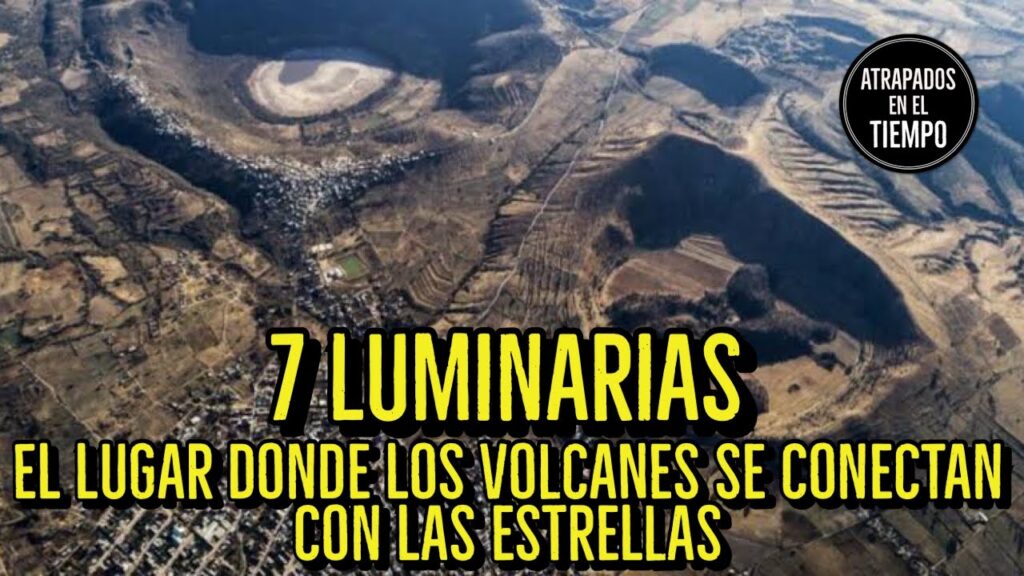Exploring the Mystery of Las Siete Luminarias: Inactive Volcanoes Aligned with Stars
Mexico is home to many natural wonders that spark the curiosity of adventurers and scientists alike, one of which is the enigmatic formation known as Las Siete Luminarias. This group of seven craters is believed to be the result of extinct volcanoes and has captivated the interest of both locals and visitors for centuries. The mystery deepens as scholars have noted that these craters seem to have a cosmic connection, aligning with specific constellations and stars that gleam brightly in the Mexican night sky.
Each year, countless travelers come to gaze upon the remarkable alignment and ponder the cosmic significance of Las Siete Luminarias. Folklore suggests that these natural wonders were once mountains that turned into volcanoes, and eventually into the spectacular craters we see today, their formation intertwined with the fabric of the universe. The eerie yet fascinating correlation between these craters and the stars has propelled Las Siete Luminarias into the realm of astrological and archaeological discussions.
The beauty of Las Siete Luminarias extends beyond the cosmic allure. Encircled by the rugged landscapes of Central Mexico, they offer an impressive vista for those with a penchant for photography and nature. Despite their dormant status, these volcanoes hold a powerful presence, standing as stoic reminders of the Earth’s fiery past. Explorers venturing into the area can also discover a rich tapestry of flora and fauna that thrives around these geological formations.
In addition to the natural beauty and mystery, Las Siete Luminarias also hold significant importance in local culture. They’re not only a celestial wonder but also a historical and spiritual landmark for nearby inhabitants. Many visitors leave with a sense of connection to something greater than themselves, a testimony to Mexico’s ability to enchant and inspire through its otherworldly landscapes and cosmic phenomena. Whether you’re an avid stargazer, a history buff, or simply in search of awe-inspiring sights, the journey to Las Siete Luminarias promises to be a memorable one.
The Astronomical Significance of Las Siete Luminarias in Guanajuato
The Siete Luminarias refer to an intriguing group of volcanic craters located in the state of Guanajuato, Mexico. This geologically rich site is steeped in astronomical history, having served as a significant landmark for ancient Mesoamerican cultures. The name ‘Siete Luminarias’ translates to ‘Seven Lights’, a term that is believed to be derived from the bright reflections of the sun on the craters’ moist surfaces, which created an impressive spectacle for the indigenous people of the region.
Astronomical alignments can be seen in the layout of the craters, suggesting that the formations were used by pre-Columbian civilizations for celestial observations and rituals. As the sun, moon, and stars moved across the sky, the shadows and reflections in the craters provided a natural observatory for tracking cosmological events. Many historians and archaeologists believe that the positions of the craters correspond with specific celestial bodies, playing a significant role in the development of the Mesoamerican calendars—a system that was incredibly precise and complex for its time.
The craters of Las Siete Luminarias were not just remarkable landmarks in the field of astronomy; they also held cultural and spiritual significance. To the ancient people of the region, the interplay of light and shadow within the craters was a powerful manifestation of divine forces. Ceremonies and offerings were likely conducted here to honor deities associated with agriculture, the seasons, and cosmic cycles, underlining the deeply interwoven relationship between the celestial events and human life.
Las Siete Luminarias: A Guide to the Volcanic Wonders of Guanajuato
The state of Guanajuato in central Mexico is not just famous for its rich colonial history and vibrant cultural scene, but also for its geological marvels known as Las Siete Luminarias. These are a series of seven dormant volcanic craters that have long intrigued both scientists and travelers alike. Formed millions of years ago, these craters are now home to unique ecosystems and have been part of the local lore and legend.
Exploring the Largest Crater: The largest of Las Siete Luminarias is the crater known as La Alberca, which is a must-visit for any adventurer traveling through Guanajuato. This colossal natural depression is filled with vegetation, offering not just a verdant view but also a habitat for numerous bird species. Hiking around La Alberca provides awe-inspiring views and the chance to encounter the area’s diverse wildlife.
Each of the remaining six craters has its own distinctive features and charm. Caldera de Rincón de Parangueo, distinguished by its near-perfect circular shape, allows visitors to walk within the crater’s walls. This surreal landscape often evokes comparisons to otherworldly locations and is a perfect spot for photography enthusiasts.
The cultural impact of Las Siete Luminarias has been significant as well. Local communities celebrate various legends and myths surrounding the origins of these craters. From stories of star-crossed lovers to ancient gods forging divine weapons, these tales add an enriching layer to any visit. In addition to the folklore, the craters have played a vital role in
the local ecosystem, supporting various plant and animal life that has adapted to the unique conditions of each volcanic site.
Unveiling the Secrets of Las Siete Luminarias Volcanic Range and Star Alignment
The Las Siete Luminarias, also known as the Valle de Santiago, is a volcanic field in Guanajuato, Mexico that boasts a collection of seven craters, each with its own distinct charm. These natural wonders have intrigued both scientists and visitors alike, as each crater provides a unique window into the geological history of the region. Named after the Spanish term for ‘seven lights’, these volcanic features draw not only those interested in geology, but also adventurers and cultural enthusiasts who seek to absorb the myths and legends woven into the fabric of the local communities.
Exploring the mysteries surrounding the star alignment with Las Siete Luminarias offers a celestial spectacle rarely observed elsewhere. Local folklore claims that these craters are aligned with specific stars and constellations, which come into harmonious alignment at certain times of the year. These moments create an ethereal experience for stargazers, as they watch the heavens mirror the earth’s volcanic scars. Astronomical events here are not only a feast for the eyes but also serve to connect the dots between earth’s geological forces and cosmic occurrences.
Aside from the night-time allure, each crater within the Las Siete Luminarias volcanic range hosts a variety of ecosystems and microenvironments, making it an excellent destination for those interested in biodiversity. As the day progresses, the sunlight unveils different facets of the craters’ interiors, from the sparse vegetation struggling to thrive on the rocky substrate to the occasional bursts of wildflowers that defy the odds. Visitors are often captivated by the raw natural beauty that challenges the otherwise serene and barren landscape.



